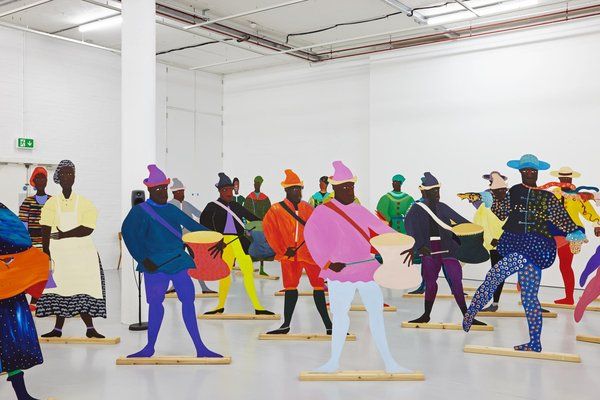Why Lubaina Himid’s Turner Prize Win Is One for the History Books
The 63-year-old, Zanzibar-born contemporary artist becomes the oldest person and first woman of color to win the prestigious award
/https://tf-cmsv2-smithsonianmag-media.s3.amazonaws.com/filer/7f/35/7f353251-bf17-4b6e-91ca-216926041fcf/lubaina_himid_0.jpg)
On Tuesday, artist Lubaina Himid became both the oldest person and the first woman of color to be awarded the Turner Prize, the most prestigious award for an artist working in the British Isles or born in Britain.
Himid was born in Zanzibar, Tanzania, and now resides in Preston, Lancashire. While she says she was never ignored by gallery owners or other artists, her complex works exploring colonialism, racism and the black experience were not popular with the art press and have been chronically undercovered. “I guess the issues I was dealing with were complex, many-layered, and you’ve got to sell newspapers,” she tells Mark Brown of the Guardian.
She says winning the award is not just for her, but for the entire community of black artists. “I won it for all the times where we put our heads above the parapet, we tried to do things, we failed, people died in the meantime … for all the black women who never did win it even though they had been shortlisted … it feels good for that reason.”
According to a press release from the Tate museum, Himid’s often satirical pieces confront the legacy of slavery, colonial racism and the invisibility of black people in history and the contemporary world. For instance, her 2004 piece “Naming the Money” includes 100 fanciful, life-size figures of black servants, toy makers, musicians, herbalists and others, the type of anonymous figures found in colonial-era artwork. Each one of her characters has intentionally been given a name and a story, which is either written on the piece or playing on a soundtrack in the installation.
The BBC reports that for the Turner Prize exhibition on Hull, the centerpiece is her 1987 work "A Fashionable Marriage." Based on 18th-century painter William Hogarth's "Marriage A-la Mode" satirical series which skews the upper classes, Himid’s version is done with cut-outs depicting Ronald Reagan and Margaret Thatcher flirting with one another, among other scenes. The exhibition also features the porcelain dinner sets that Himid rescued from resale shops. On them, she’s painted images of slaves an the aristocrats they serve, including some vomiting at the news of slavery’s abolition.
Caroline Elbaor and Javier Pes at artnet News report that the reason Brown broke the age barrier is because since 1991, the prize has been limited to artists under the age of 50 in an attempt to keep it from becoming a retrospective prize. This year, however, organizers dropped the age limit acknowledging that older artists are also continuing to add vibrant new works to the art world. In fact, another article by Brown for the Guardian notes that this year's shortlist of four artists were all relatively older, ranging form 43 to 62 years old.
As Emily Pethick, one of the Turner prize judges, tells Brown, Himid's selection wasn’t intended as some sort of statement. “We really responded to artists we felt had really deepened their practices and were at really exciting moments; we weren’t really looking at age,” she says. “It is just clear when an artist is really in their moment and that is what we really wanted to reflect.”
Himid’s work and the work of others on the Turner shortlist will be exhibited at the Ferens art gallery in Hull until January 7.
